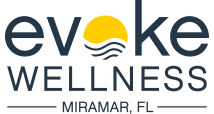The history of benzodiazepines is not straightforward. There are several facts about benzos to consider since so many different drugs fall under this category of narcotics. To help better understand the history and abuse of these substances, call 866.931.9312 to speak with someone at Evoke Wellness at Miramar.
Our experienced and highly qualified team members at our benzo rehab program can explain the history of benzos and provide you with information about our benzo addiction treatment program.
What Is the History of Benzos?
There are many types of benzos—such as Xanax, Valium, and Ativan—and their history dates back to the 1950s. Researchers then discovered benzodiazepines had a calming effect on people with anxiety disorders and other mental health issues. Soon after, doctors began prescribing these drugs to treat various medical conditions, including seizures and insomnia. By the 1970s, benzodiazepines like Valium and Librium had become some of the most commonly prescribed medications in the United States.
However, benzos began to be abused recreationally due to their sedating effects and low risk for addiction. This misuse led to increased overdoses, hospitalizations, and even deaths. As a result, the U.S. Food and Drug Administration (FDA) issued several warnings about benzodiazepines in the late 1970s and 1980s. Benzos remain widely prescribed despite their potential to be abused and misused. As a result, people need to understand the history of these drugs to be better informed about their beneficial and harmful effects.
History of Librium
Librium is perhaps the first prevalent substance we can observe in the history of benzodiazepines. First created in 1955 and fully released in 1963, this drug was marketed as less addictive and harmful when compared to other medications that treated similar symptoms. This led to a quick rise in sales and laid the foundation for the roughly 100 million prescriptions, or about one out of every three U.S. citizens, of the various benzodiazepines available today.
History of Valium
Valium is a successor to Librium that was developed in 1959 and released to the market in 1963. It became incredibly popular around 1968 and occupied the top spot until 1982. This narcotic was practically everywhere during these years and became so common that they earned a nickname that lives on to this day—“mommy’s little helper.” Today valium is still widely used but is far from its peak sales in 1978.
History of Xanax
Benzodiazepine discovery for first-timers usually comes in the form of Xanax. If you want to know when Xanax was created, the answer is technically the 1970s. The question of how long Xanax has been around for general public use would be the early 1980s. When did Xanax hit the market as a popular drug for anxiety reduction? Around the same time, it was produced en masse.
Other Facts About Benzos You Need to Know
Today, benzos are widely used to treat mental health issues such as anxiety and insomnia. These drugs can be beneficial when taken correctly in small doses and combined with other treatments. However, they can also cause addiction or overdose if misused. Additionally, benzodiazepines should not be mixed with alcohol or other substances due to their additive effects.
Some other important facts about benzos include the following:
- Mixing them with alcohol can cause serious health issues, including overdose and blackouts.
- Over time, higher doses will be needed to create the same effects.
- The body can, in some cases, increase anxiety in response to regular use of these medications, causing a negative feedback loop in which a person needs more to sustain a lack of anxiety.
It is essential to stay informed and understand the history of benzos and the facts about benzos before taking them. If you or a loved one is struggling with benzo abuse, it may be time to seek professional help. Evoke Wellness at Miramar provides evidence-based treatment plans custom-made for each individual.
Alternatives to Benzos
For those struggling with anxiety and addiction, or other health issues, there are alternative options to medication that can help soothe anxiety and insomnia:
- Mindfulness
- Meditation
- Breathing exercises such as box breathing
- Yoga and other exercises
- Art or music therapy
These are just a few of the options continually improving as alternatives to benzos.
Find a Benzo Rehab Center at Evoke Wellness at Miramar
If you or a loved one require drug detox or addiction rehabilitation in South Florida, consider seeking help with Evoke Wellness at Miramar. Our expert treatment specialists will work to help get you or your loved one’s life on the path to health and happiness.
Contact Evoke Wellness at Miramar at 866.931.9312 to get started. You can also read some of our other articles to learn more information about benzos and other addictive substances.


